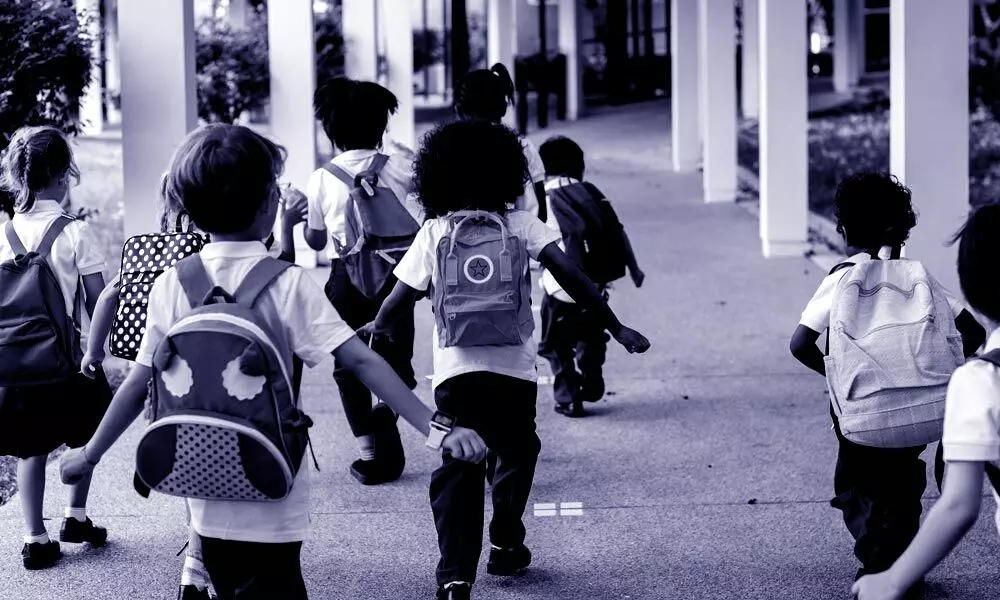Getting children back to structured learning is need of the hour
Even as the complete reopening of schools is still shrouded in uncertainty, the good thing is that it’s back to school again for millions of students across the country.
image for illustrative purpose

Even as the complete reopening of schools is still shrouded in uncertainty, the good thing is that it's back to school again for millions of students across the country. It's time also to take a serious look at some of the interesting and revealing facts and figures. Nearly twenty months into the Covid-19 pandemic, schools for nearly 77 million students in six countries continue to be almost completely closed. An updated data analysis by UNICEF reveals this stark ground reality. In total, an estimated 131 million students in 11 countries have missed more than three-quarters of their in-person learning. Around 27 per cent of countries worldwide continue to have schools fully or partially closed.
School closures have created an existential crisis for children. Beyond falling behind on their education, many children are missing out on school-based meals, experiencing social isolation and increased anxiety, and being exposed to abuse and violence. For some, school closures have led to drop-outs, child labour and child marriage. Many parents have been unable to continue with their jobs while balancing their children's care and learning needs. Some have lost their jobs entirely, pushing their families into poverty and creating a deeper economic crisis. Remote learning has been a lifeline for a section of school children but access to the technology and the quality of the curriculum has been uneven within several communities.
Primary data collected by CRY from a sample of households in CRY's operational areas in 18 states shows us that last year alone there has been a significant increase in child labour. Children have lost touch with their school subjects and the habit /routine of structured learning. As schools start to reopen, they are being promoted to high grades even if they have not learnt the coursework of the previous grade. The curriculum in their new classes may be beyond their grasp – children may soon be studying Class V study material even if they last properly learnt only Class 2 material.
CRY data reveals that a large number of children in the operational areas are struggling with simple processes of Maths and basic language skills, simply because they have not been in touch with the subject, and have fallen behind as regards to their class and age level competencies. Children living in remote areas could not avail of online classes because lack of smart phones and internet connectivity. Only 25-30 per cent of those who could manage to take online classes attended classes regularly.
The bottomline is that education should not take a backseat for the kids even during the trying times. What we need is a set of intervention initiatives, which should aim at getting children back to structured learning, by helping them overcome their learning deficiencies and giving them the necessary confidence to go back to school.

